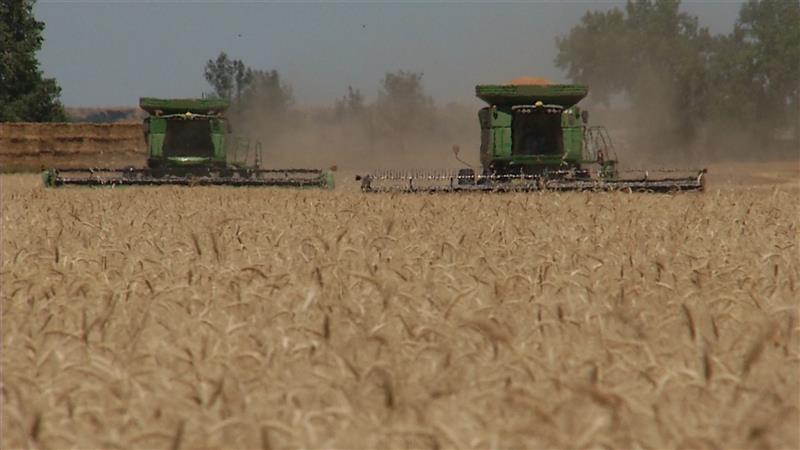American agriculture needs a permanent disaster program that can provide aid quicker than ad-hoc aid that has helped buoy farmers in recent years.
That was a repeated theme at a congressional hearing Wednesday from producers who highlighted the increase in disasters that have hit farmers around the country in recent years. Lawmakers are reviewing the farm safety net as Congress considers what changes might be necessary leading up to expectations of a 2023 farm bill. The House Agriculture Subcommittee on General Farm Commodities and Risk Management examined the efficacy of the farm safety net.
Rep. Cheri Bustos, D-Ill., who chaired the hearing, said it is important to understand how farm programs are working for producers right now. “So, for years, our family farmers have faced these kind of devastating impacts from the weather, and it leaves them with a lot of uncertainty about what does this mean for their future,” Bustos said.
Congress over time has created permanent disaster programs for farmers then dropped those programs for various reasons. Ad-hoc aid, though, became the primary safety net in recent years as $14.5 billion was paid out under the Market Facilitation Program (MFP) for trade aid; the Coronavirus Food Assistance Program (1, 2, AA) in its multiple forms has paid out $33.1 billion to producers; and the Wildfire and Hurricane Indemnity Program-Plus has paid out at least $3.2 billion to help offset natural disaster losses from 2018 and 2019.
The high volume of ad-hoc aid reflects some of the shortcomings of both crop insurance and the base commodity programs – Agricultural Risk Coverage (ARC) and Price Loss Coverage (PLC).
“Never in my career has agriculture become so reliant on emergency assistances,” said Jeff Kirwan, a corn and soybean farmer from west-central Illinois who also advises Bustos on agricultural issues.
Kirwan said the last three years caused major challenges that his farm and others are still recovering from, pointing to the trade disputes, the 2019 flood, and the impact the pandemic had on supply chains.
Crop insurance remains a critical safety net for the industry, but CFAP, WHIP-Plus and MFP became “timely emergency assistance” for producers as ARC and PLC were not designed to deal with some of these challenges, Kirwan said.
“There needs to be a review of these programs, and farmers need to be part of that conversation,” Kirwan said.
Rep. Austin Scott, R-Ga., said farmers in his state saw the shortcomings of the crop insurance program after Hurricane Michael. Scott indicated changes to crop insurance may be needed given farmers typically have to suffer 20% to 25% losses before crop insurance pays out. Having to use the average county yield for insurance also can be a hindrance, he said.
“Being insured for the average yield won’t in most cases cover for your losses,” Scott said.
While WHIP-Plus is paying on disasters from 2018 and 2019, Congress has not authorized funding to pay for disasters in 2020 that would aid producers such as those in Western states hit by drought and wildfires last year, or the derecho that hit the Midwest.
Robert Tate, a farmer and crop insurance agent in Cannon Falls, Minnesota, said “crop insurance is an absolute mainstay,” but he noted there are challenges such as Actual Production History that can lag behind what producers can yield. Tate warned against calls from crop-insurance critics who want to eliminate the Harvest Price Option or impose income or payment caps on crop insurance.
Gary Schnitkey, a University of Illinois professor in farm management, said the last several years have exposed weaknesses in the current commodity programs. Soybean prices hit decade lows, but not low enough to trigger PLC payments, and ARC payments were modest at best. Asked about the risks of widespread drought this year, Schnitkey said farmers would see lower yields, but crop insurance would help offset those losses. Roughly 90% of all corn and soybean acreage is covered by crop insurance.
Rep. Glenn “GT” Thompson, R-Ga., ranking member of the full committee, said farmers need reliable assistance rather than waiting for ad-hoc aid. Thompson said he would support a permanent disaster program if it complemented crop insurance, but did not compete with it, and is easy to implement, as well as respond quickly to disaster events.
Thompson asked about experience with WHIP-Plus, which is still paying out for disasters two years ago. Tate said he believes the crop insurance industry could more quickly implement a program such as WHIP than the Farm Service Agency.
Scott noted farmers typically must pay off operating loans from the prior year before financing the next crop. WHIP-Plus has not been able to keep up with that. “When these things like Hurricane Michael happen, we need to get the payments to farmers significantly faster than what happened after Hurricane Michael,” Scott said.
Asked about needs at FSA, farmers noted the CFAP Quality Loss Assistance program took up a significant amount of time for FSA staff. Local offices right now are understaffed. Tate again plugged the ability for the crop insurance industry to take off some of that load.
“I got to think there is a way to implement that through the crop insurance program,” he said.
The subcommittee hearing did not get into the weeds of how a permanent disaster program would be funded.
###
DTN


